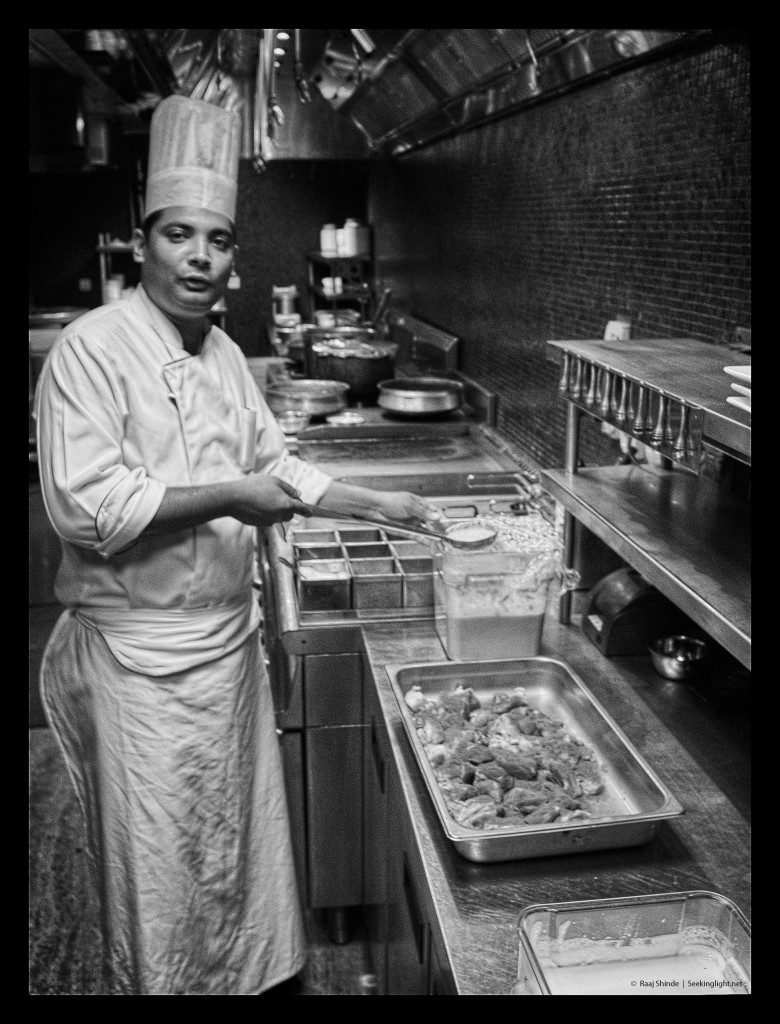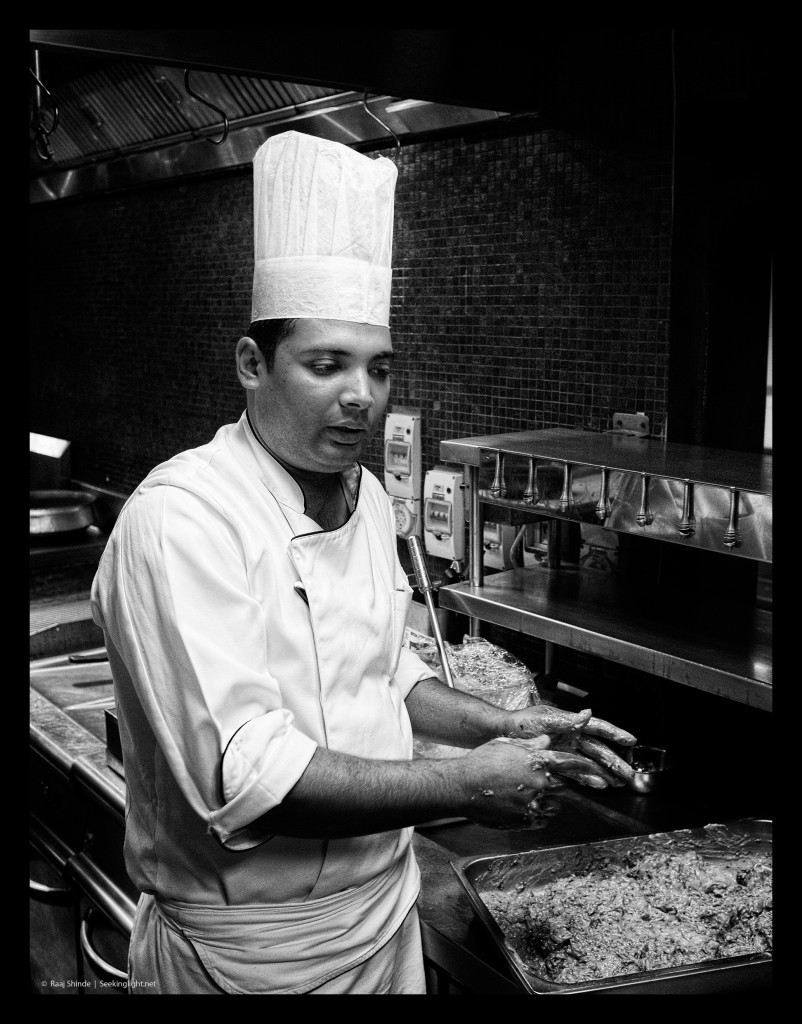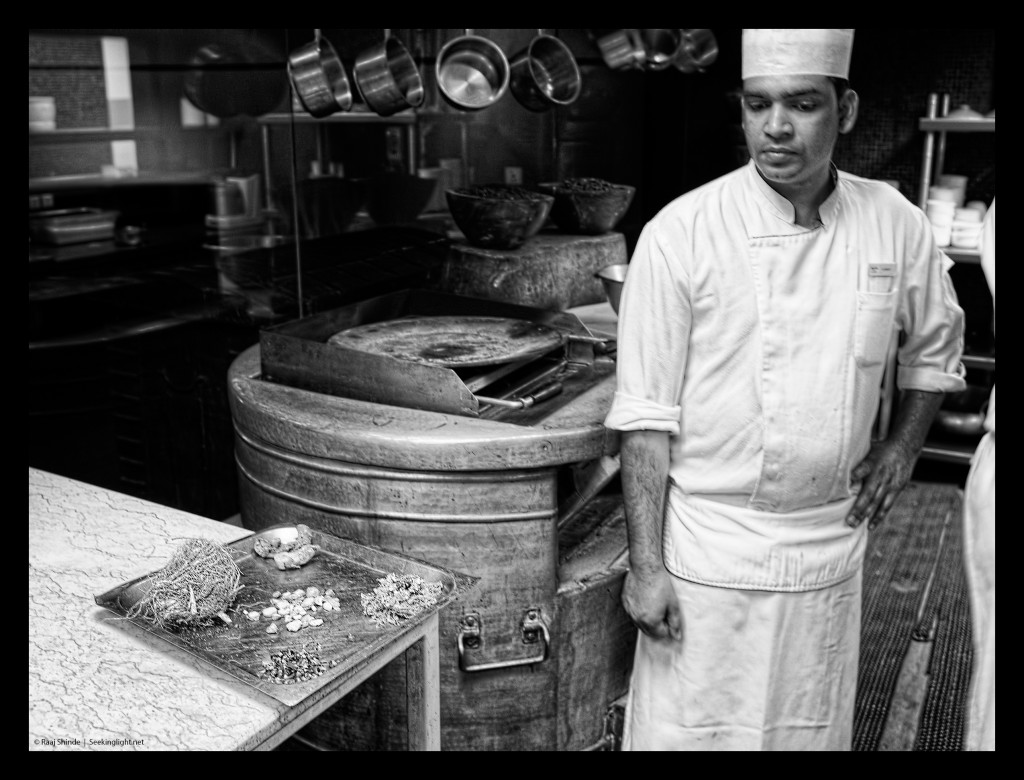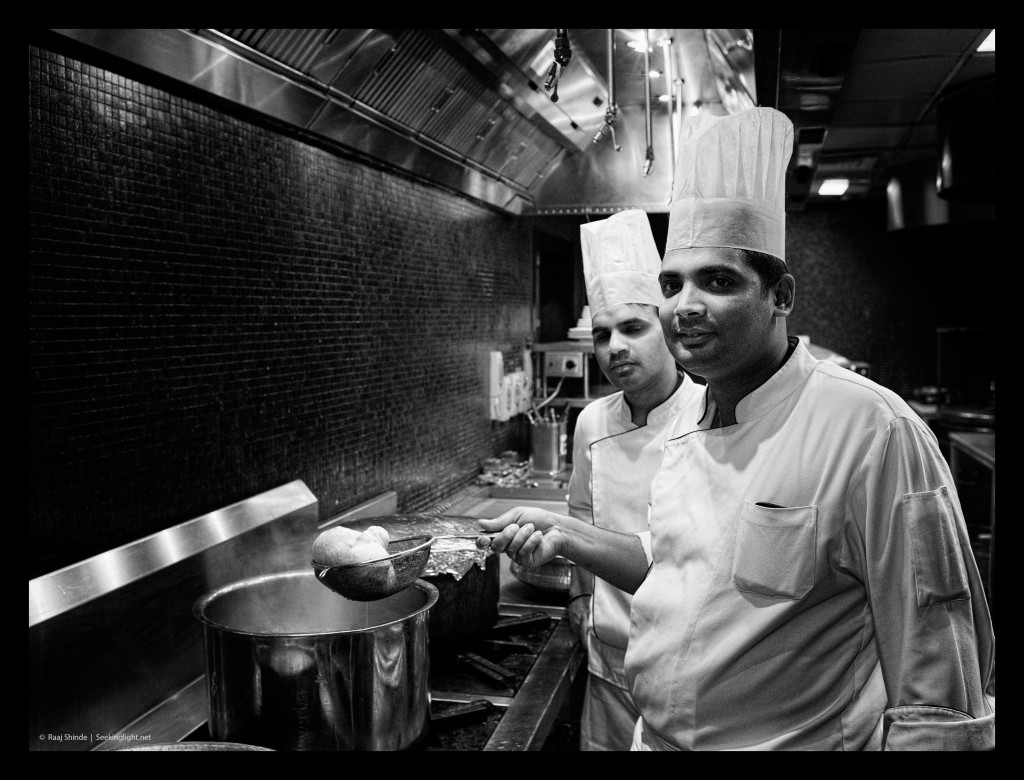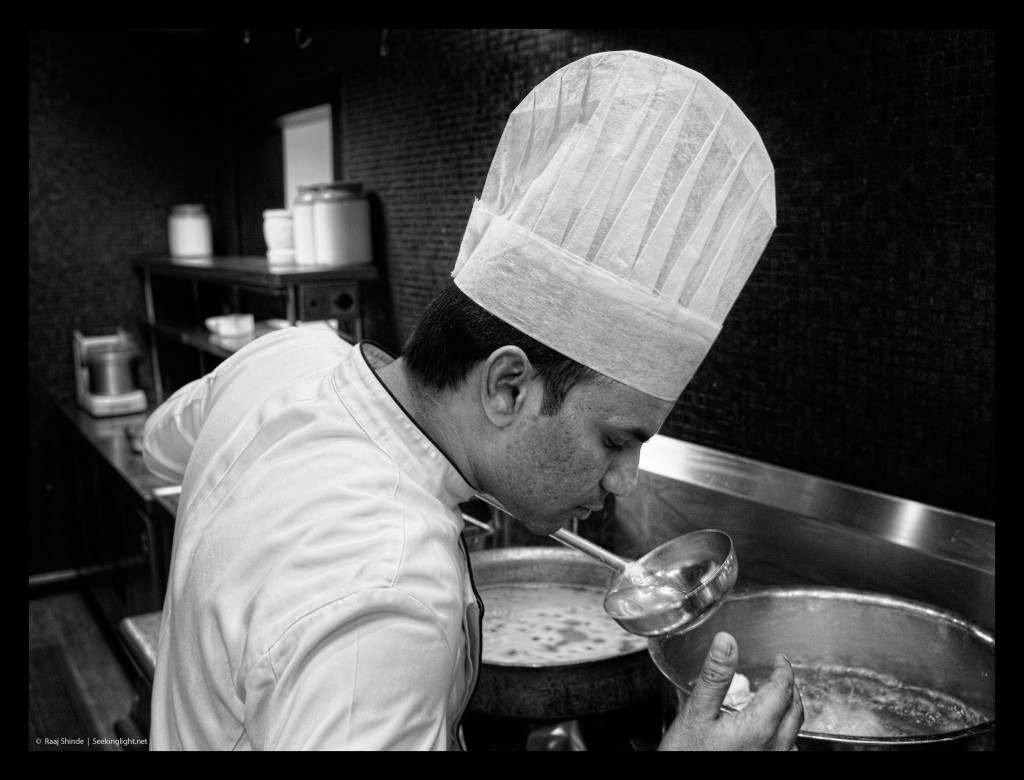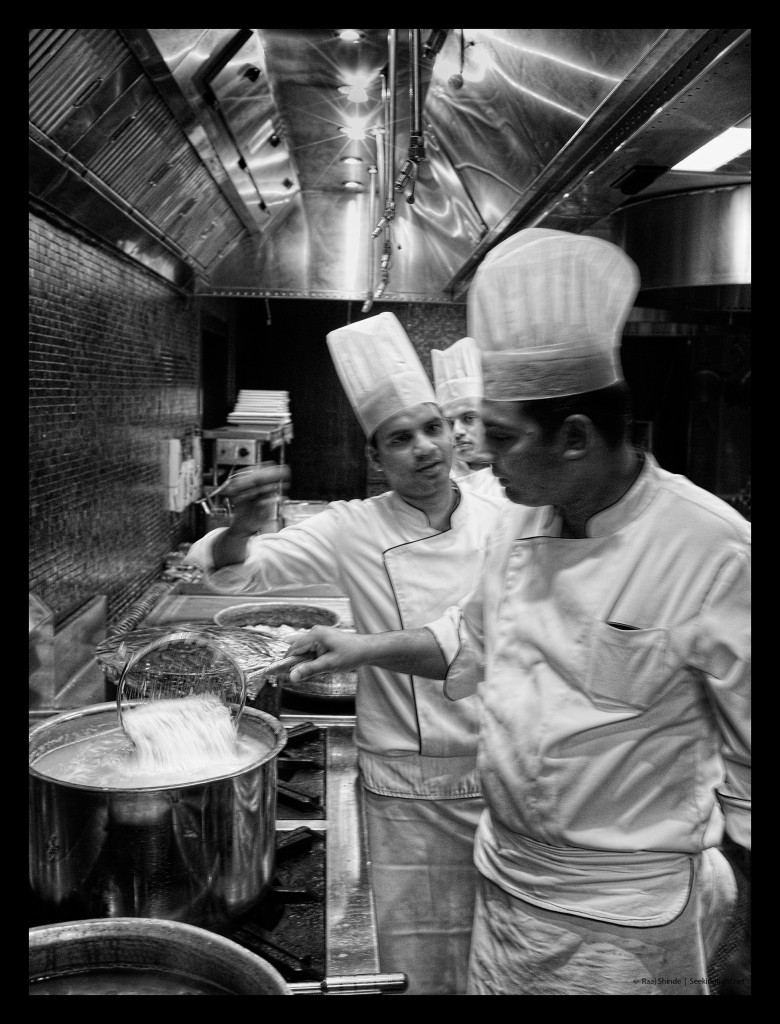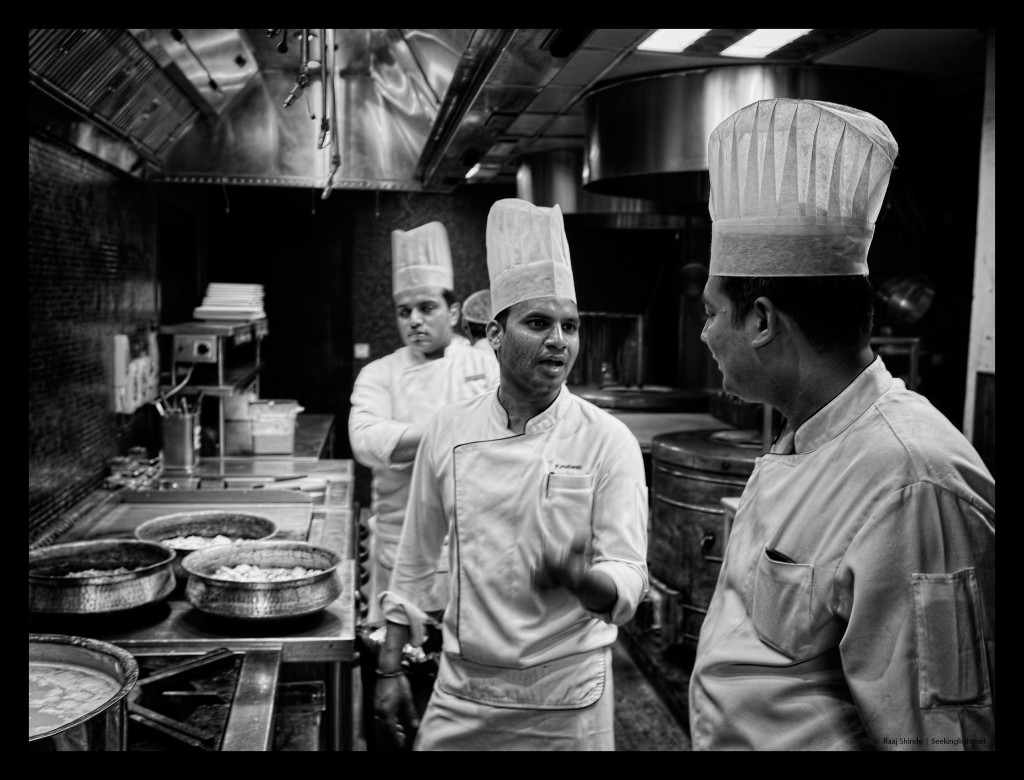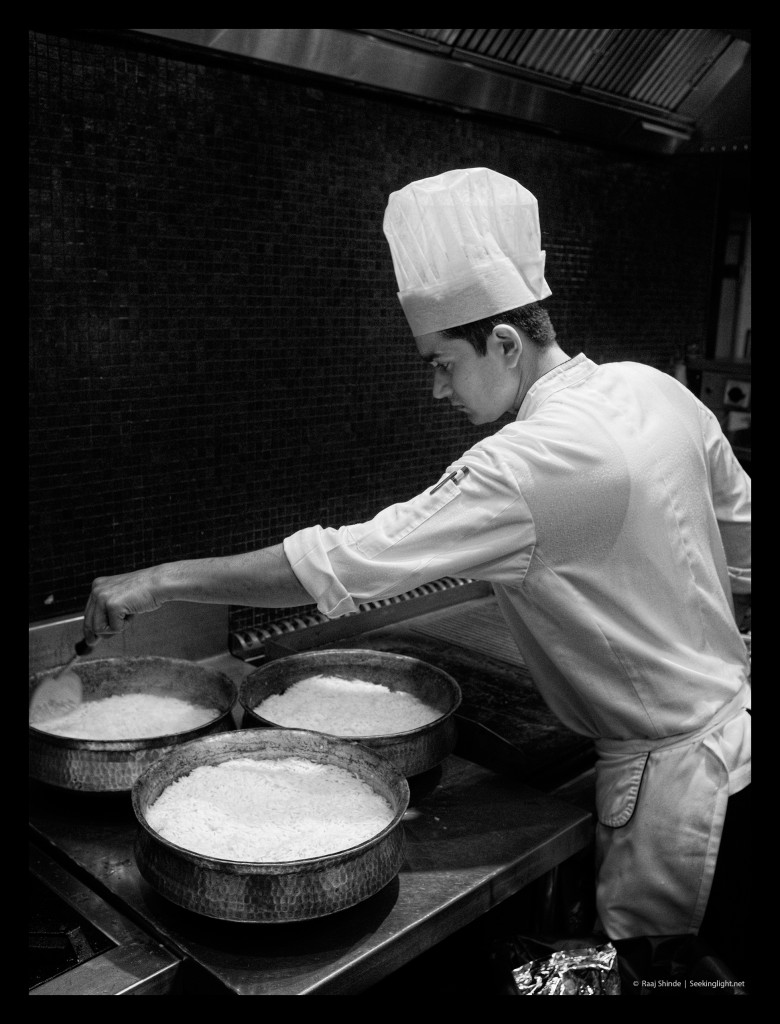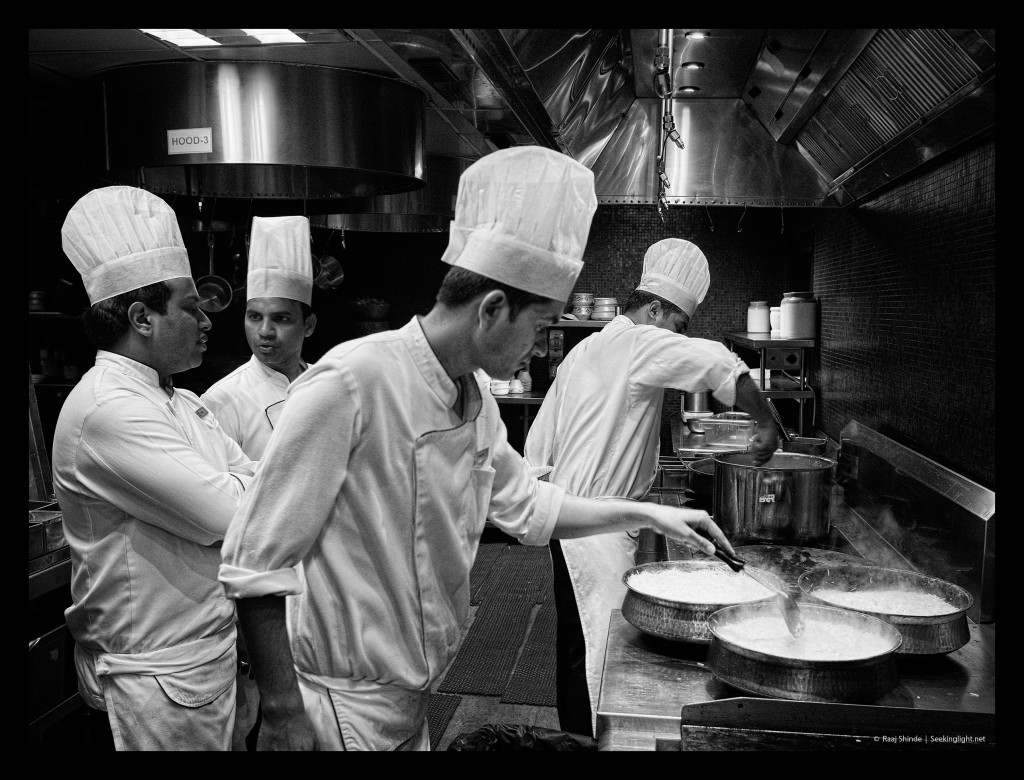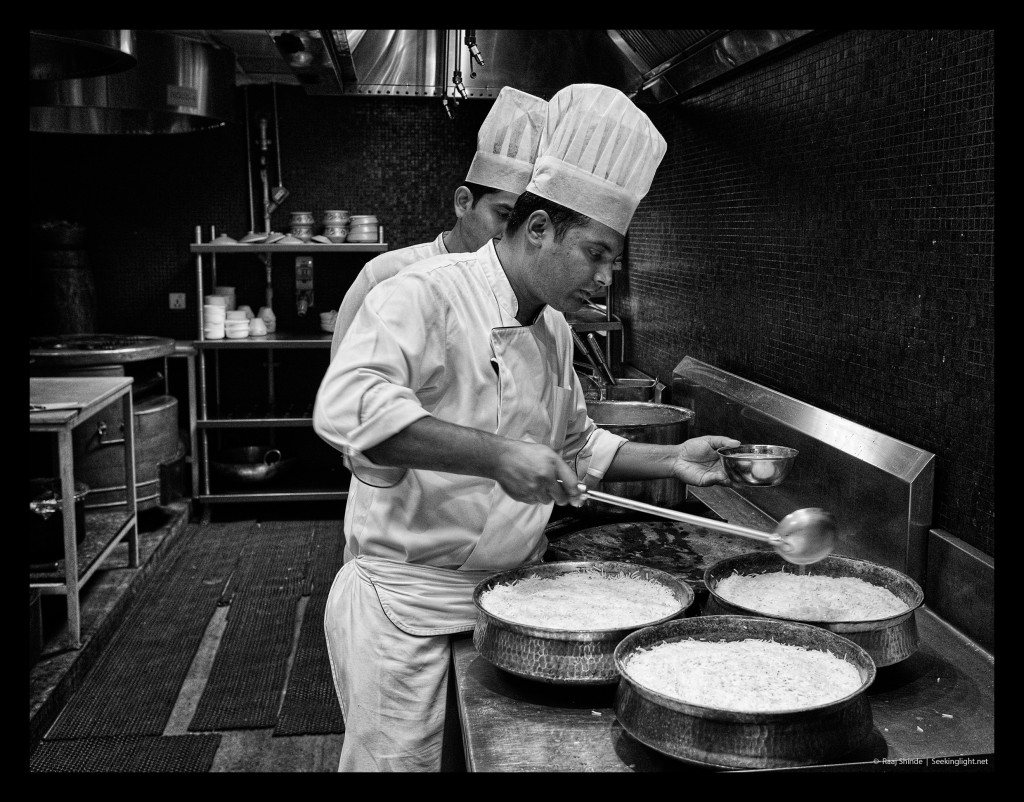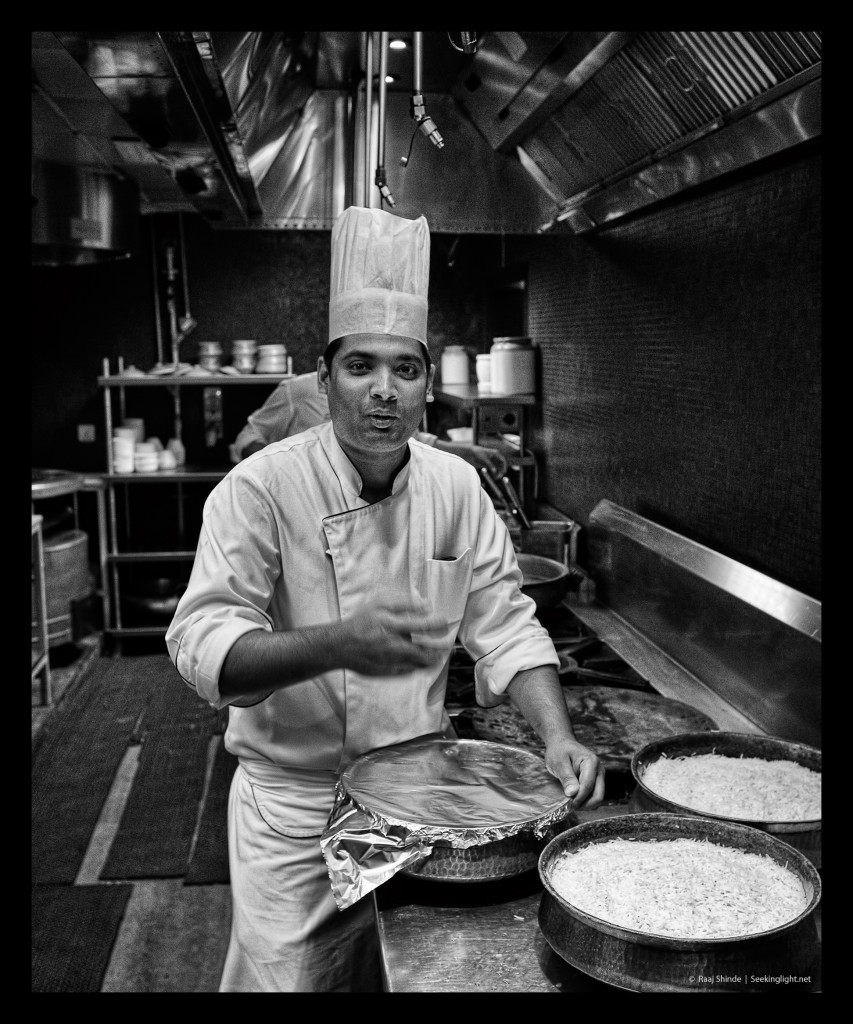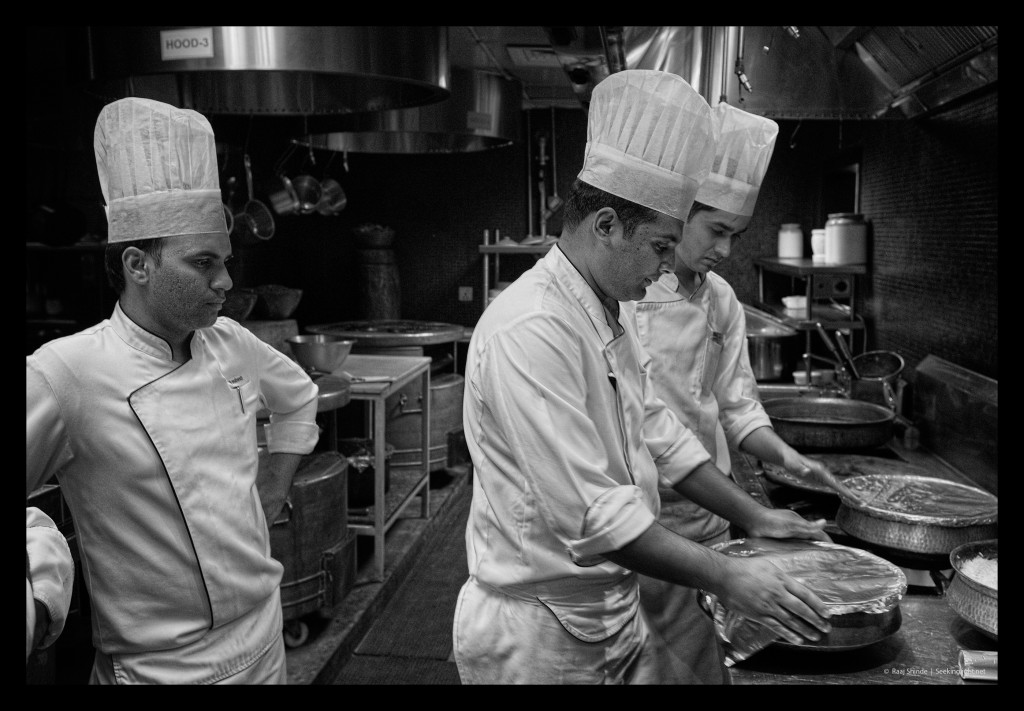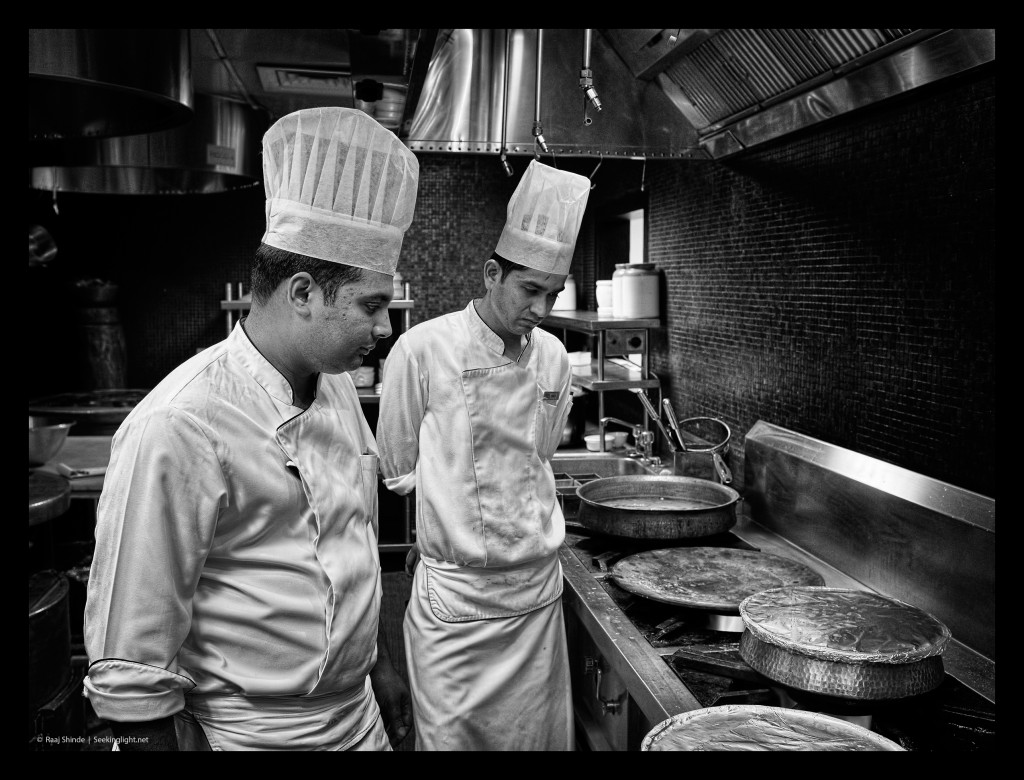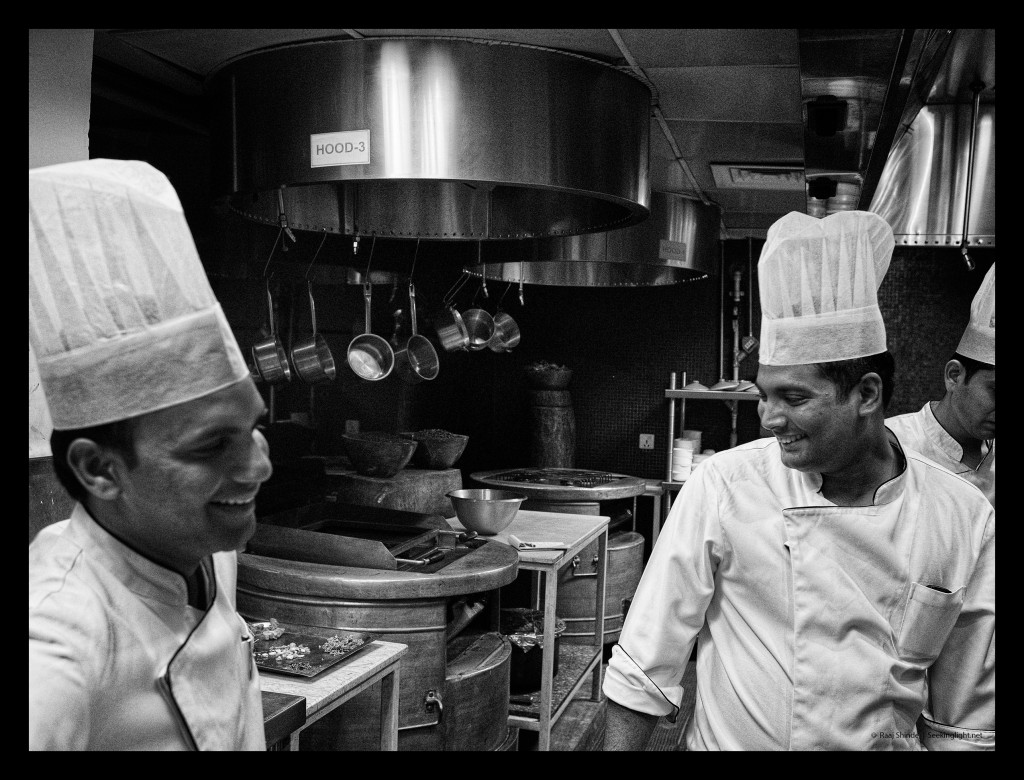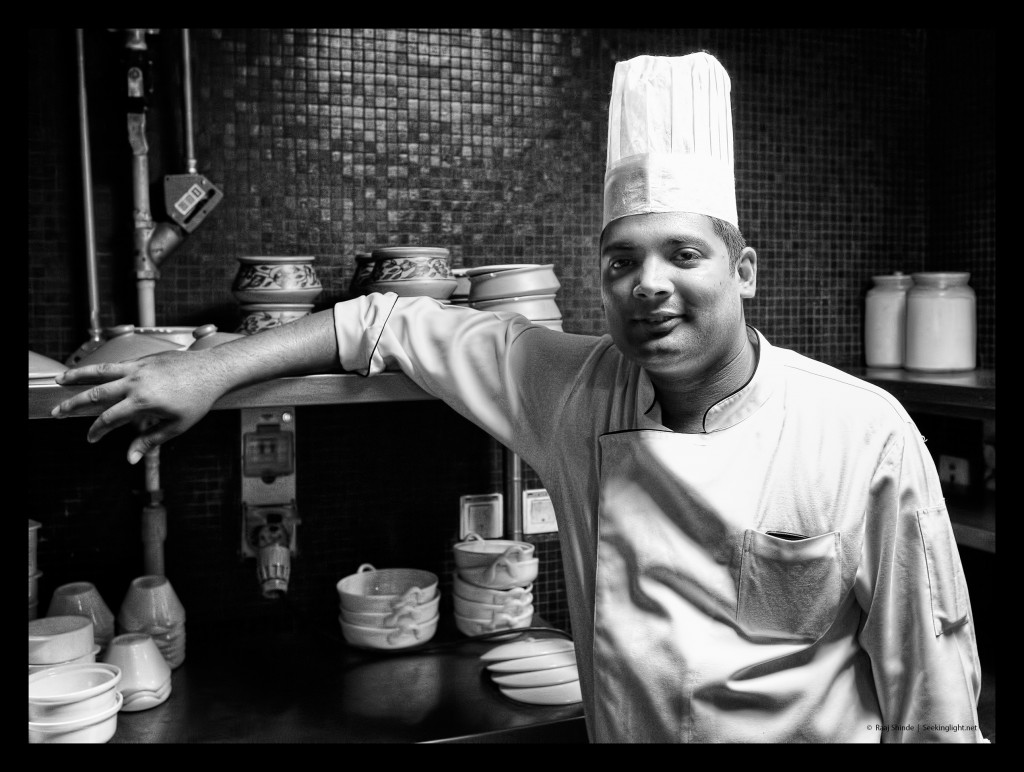A few weeks back I was at the Jaipur Mariott. Saffron, a restaurant at the Mariott that serves classic Indian cuisine, was running a week-long Hyderabadi food festival. Hyderabad, a state in southern India is renowned for it’s cuisine, a legacy of the Nizams (rulers) of Hyderabad who had a passion for good food and music. Hyderabadi cuisine is heavily influenced by the cuisine of Awadh, a princely state that used to exist in Nothern Indian. The chefs of Awadh introduced the world to Dum Pukht (literally “slow oven” in Persian) cuisine – food that is notable for it’s rich flavors and aroma, achieved by slow cooking over low flame, in sealed utensils.
Saffron had a new chef, Chef Qadir, who specializes in Hyderabadi Cuisine. He invited me to come sample the new menu. I agreed and showed up one evening, leaving the choice of dishes to Chef Qadir. I was treated to eight or nine dishes and can honestly say that every one of them was exquisite. That evening, for the first time in my life, I began to understand the mindset of the romans and the way they ate at their bacchanals!
The most mind-blowing dish that evening was Lamb Biryani, a delicacy of India – a delicately spiced, aromatic dish of seasoned lamb and rice. I had never eaten Biryani like that before and conveyed that to the staff and the Chefs. They were pleased with my obvious enjoyment of the dishes and offered to teach me how to cook Biryani! Needless to say, I took them up on their offer and showed up one afternoon for a lesson with a Master Chef. I was asked to put on a Chef’s hat and brought in to the kitchen. They graciously allowed me to shoot that lesson – I had brought my camera along. These images were captured in the midst of trying to take notes, while attempting to listen carefully and watch Chef Mahesh and Chef Qadir, as the Biryani was created.
Chef Qadir gets ready to add yogurt to the marinade – the lamb in the tray has already been spiced with red chilly, coriander, ginger and garlic paste, salt and a special mixture of spices that include cloves, cinnamon, green and black cardamom and other exotics like pathar ke phool (literally flowers of rock). The marinade is rubbed in well and the tray covered up to marinade in a cooler for 24 hours.
Here Chef Qadir explains that the yogurt in the marinade serves as a tenderizer for the meat. If the meat is especially tough, additional tenderizing using papaya paste may become necessary. However he tells me that the lamb in Jaipur is of the finest quality and does not need additional tenderizing.
On the tray here, we some of the exotic spices that are not very commonly used in Indian cooking, as a whole. Some of these spices are only available in and around Hyderabad.
Three handis (pots) have been made – one with the marinaded lamb, one with chicken and one with vegetables for the three Biryanis. The next step is to cook the rice. The secret here is a mixtures of spices and rose petals that are bundled in a muslin cloth, called a potli. The water is boiled until the spices in the potli have leached and infused into the water. When this happens, the water takes on an orangish color. Here we see Chef Qadir about to put the potli into the boiling water.
The water is close to done and here Chef Mahesh gives it the sniff test – the aroma of rose must be present, along with other subtle scents from the spices.
The water is ready for the rice – the potli of spices is taken out, salt added and then Basmati rice that has been soaked for a while is added to the boiling water.
Another secret to a great biryani is the layering of rice that has been cooked to different consistencies. Here, as Chef Qadir stirs the rice, Chef Mahesh explains to me the consistency of rice that goes in the first layer – it must be about 50% cooked, with a firm consistency.
Here as Chef Mahesh and Chef Qadir discuss the finer points of the spice mixtures, we see the three handis with lamb, chicken and vegetables, awaiting the first layer of rice.
The first layer of half-cooked rice is layered on to the meats/vegetables.
The second layer is on now and Chef Q is testing the rice in the boiling water for the last layer.
Once the three layers of rice are in place, the next ingredient is ghee (clarified butter). Here we see Chef Qadir adding the butter. And yes, this dish is very rich – almost certainly guaranteed to expand the mid regions and harden arteries if partaken on a regular basis! ![]()
The final step and the essence of Hyderabadi cooking – sealing the handi for the Dum. Here we see Chef Qadir sealing the first handi with foil. He explains that sealing the foil is key and must be down carefully and thoroughly – any sloppiness here will allow the delicate flavors to escape and ruin the Biryani.
The first handi has been sealed and is being cooked on an open flame as Chef seals the second handi. Notice that the surface of the foil on the handi being cooked in concave at this stage.
Here we see the first handi which has been cooking for a bit – the pressure inside had caused the foil to bulge outwards. This is the point when the handi will be taken off the flame and put on the
tava, the flat griddle that is being preheated on the adjacent burner. Then the Biryani is cooked on indirect heat for a while longer. At this point we are done with the cooking.
The Chefs ask me if I have any questions. I remark that I hadn’t seen them measure anything at all through the entire process – all the spices were tossed in without any explicit measurement. This cause a bit of mirth – they are too polite to say it but I’d bet that essentially they are thinking “measurements are for amateurs” ! ![]()
Finally, here is a portrait of Chef Qadir. Chef Mahesh had left by then.
A wonderful experience, the Jaipur Mariott has some of the warmest and friendliest people in Jaipur. Their food is awesome too!
As always, comments & critique welcome.
